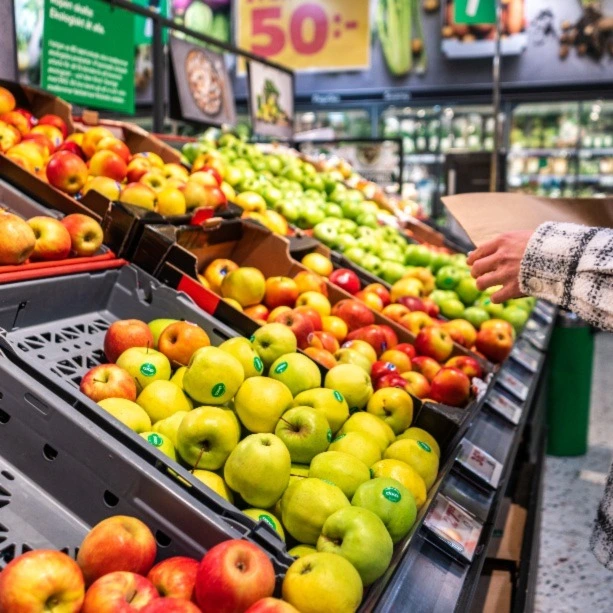Food waste is a serious issue not only in America but worldwide. Each year, millions of dollars are lost by food spoilage, waste from households, food services, and retail. To preserve our planet, we must find more ways to reduce food waste, including practical IoT solutions.
Food Waste
Grocery stores and food distributors suffer significant losses from food waste and are looking for a scalable solution. Food loss can be caused by on-site food spoilage or recalls. According to the UN Environment Programme’s (UNEP) Food Waste Index Report 2021, about 17% of global food production may go wasted. This is a problem worldwide, but it is even worse in the United States, where 30% of food in grocery stores is wasted. Not only is food wasted on-site, but according to IoT Hub, Food Safety magazine counted 337 food safety recalls in the United States last year. The companies surveyed put costs at up to $30 million per incident, including direct and indirect costs such as fines, lawsuits, lost sales, and brand damage. We can see how big of an impact recalls can have on an economy from the shortage of baby formula in grocery stores. This shortage started when the FDA shut down a large baby formula manufacturer and issued a recall on its products due to unsanitary conditions. Recalls can take a long time to go into effect, which may result in serious health problems for consumers who have not been notified of the recall.
Join the AirFinder Difference!
- Innovation. Organizations can be freed up to innovate and bring more impactful products and services to market.
- Profitability. Increased profitability provides new opportunities to innovate and improve valuation.
- Digital Transformation. Discover competitive advantages, new revenue opportunities, improved customer relationships and increased efficiency.
How Can IoT Help?
The internet of things can offer great solutions to this worldwide waste, helping alleviate the pressure on grocery stores and their suppliers to reduce waste. For example, IoT can offer three benefits to grocery stores to prevent food waste: traceability, temperature and energy monitoring, and artificial intelligence.
Traceability
Location is vital in grocery stores regarding stocking, inventory, and receiving. How far away is the new shipment of produce? Is the product still sitting on the dock? How long has it been there? These are fundamental questions for grocery store operators. IoT asset tracking gives grocery stores visibility into every shipment, pallet, and returnable packaging container (RPC). Applying a tag to a pallet gives an operator constant visibility and records of past locations and times. The application of RPCs is new but revolutionary. Tags are applied to these returnable containers so that the grocery store and food distributors know the location at all times, which reduces both the loss and destruction of containers.
As tags become smaller and cheaper, the potential uses increase. Hypothetically, if tags were small enough to be placed on every product, then our SuperTag could be placed on the RPC to act as a hub. This development has impressive potential in what it can offer grocery stores and food distributors. Additionally, grocery stores can prevent spoilage by tracing the time a pallet or RPC has been outside. Constant visibility can prevent future spoilage and reduce food waste.
Temperature and Energy Monitoring
Even more critical than traceability is temperature monitoring. Temperature control and cold chain monitoring are necessary for modern grocery stores to maintain an environment that achieves their sustainability needs. Research shows that IoT causes a 40% reduction in food loss through temperature monitoring. If every grocery store implemented temperature sensors, imagine the savings and sustainability they could achieve.
For example, IoT could save products like meat and dairy from spoilage when refrigerators break down. Operators can ensure proper maintenance of their refrigerated equipment by monitoring its temperature levels instead of following a scheduled paper plan. Cold chain monitoring furthers this benefit by tracking the temperature of goods while still in transit.
Not only are monitors for temperature helpful, but energy monitors are also helping grocery stores. IoT can also offer a net energy saving of 30% to grocery stores using energy monitors. These monitors make sure to save energy when it is not needed, and it allocates the energy to another area for total optimization. These monitors and their data will help your business save significantly and reduce waste.
Artificial Intelligence
Almost every industry sees artificial intelligence (AI) as a pillar for its future, so it makes sense that AI has a solution to reduce food waste. Grocery stores use AI for cleaning, packing, storing, and monitoring. AI uses data to carry out essential tasks to ensure food stays clean, fresh, and stocked. The AI also can order the product at the perfect time based on past data and forecasting. While AI will deal with supply and maintenance, it gives employees more time to focus on personal interactions and provide an enjoyable customer experience. These benefits give grocery stores the power to enhance the customer experience and reduce food waste.
.webp?width=1000&name=Sustainability_banner%20(1).webp)
What is Link Lab’s Role in Sustainability?
Link Labs uses IoT technology to help with waste prevention, cold chain monitoring, and other sustainability initiatives. To learn how Link Labs can help your company reduce food waste in storage, in transit, and on the shelves, book a demo today!




